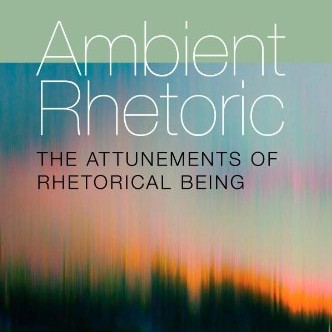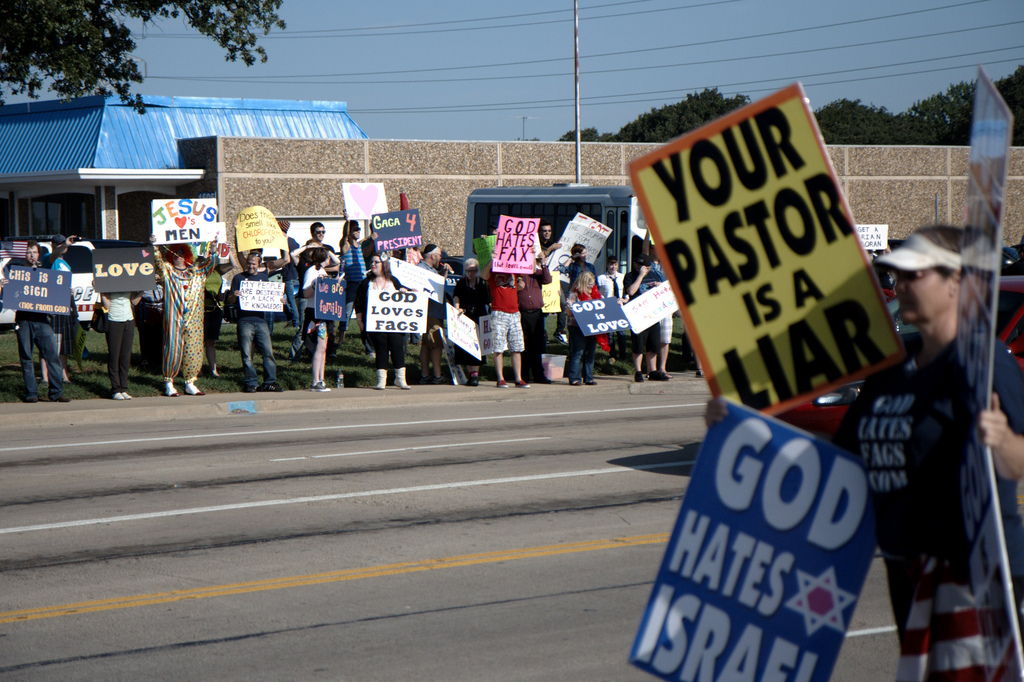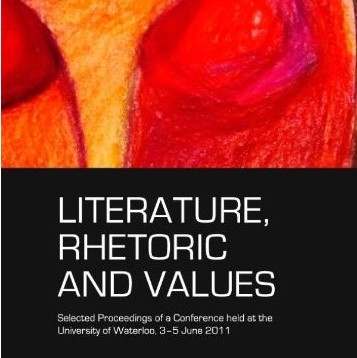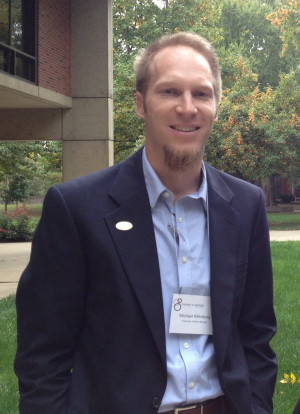“Student-Athletes” and the Rhetorical Consequences of Naming
On March 26, 2014 the National Labor Relations Board (NLRB) in Chicago ruled that Northwestern football student-athletes are employees, and, therefore, can vote to be represented by the College Athletes Players Association for the purposes of collective-bargaining.1 The players’ vote may result in student-athlete salaries, health care benefits, including better concussion testing, and guaranteed four-year scholarships. Richard Epstein, professor of labor law at New York University, said in an April 2014 CNN.com article that the ruling has “vast implications for the structure of the sport, if upheld” (qtd. in Ganim). The “if upheld” phrase looms large, as Northwestern plans to appeal the ruling and the players still need to vote. As I write today in January of 2015, the case is still tied up in the courts after various parties filed amicus briefs in support of Northwestern. However, the NLRB’s decision sent a shock-wave through the Indianapolis headquarters of the National Collegiate Athletic Association—only 150 miles away from the ruling in Chicago—which has long attempted “to shore up [the] crumbling façade” that student-athletes are students, not employees (McCormick and McCormick 74). The NLRB ruling foregrounds attention to the term student-athlete. For rhetoric scholars/practitioners and readers of Present Tense, attention to this term—a term collectively thrust upon over 450,000 student-athletes in American higher education—offers an opportunity to analyze its genesis and how it dangerously positions a person within the multibillion dollar college sports industry.
The NCAA’s decision in the 1950s to adopt the term student–athlete for students who participate in a NCAA-sponsored sport exacerbates many current problems plaguing college sports. While one may argue that American college sports prior to the 1950s and the introduction of the hyphenated identity marker student–athlete were by no means a noble enterprise, through the rhetorical act of naming and grouping a large swath of the student population under the term student–athlete the NCAA has deflected criticism arising from the scandal-of-the-moment by constantly reminding all who will listen that these are student–athletes, not employees, not professionals.
In what follows, I offer a framework for investigating the rhetorical act of naming before moving into a brief historical account of the term student-athlete. I conclude by blending rhetorical theories of naming with scholarship in kinesiology, sports management, and legal studies to illustrate how such a term is not only a misnomer but a powerful rhetorical tool. This tool denies a person room for political action and forces the embodiment of a marketable image created in the best interest of the NCAA and higher education.
Situating the Rhetoric of Naming
In her detailed account of the Women’s International League for Peace and Freedom (WILPF), Wendy Sharer undertakes a “semiotic approach to naming” to “shed light on how discursive strategies help create collective identity as a basis for political action” (235). For the WILPF, the rhetorical act of naming, the choices embedded in each specifically selected word of the organization, was the initial step toward advocating for women’s rights as it facilitated cohesion among its members. As Sharer asserts, “the terms an organization selects for its name . . . are synecdochic structures that stand in for the larger arguments informing collective identification of the group” (234). Pierre Bourdieu’s argument that the “imposition of a name . . . is to signify to someone what he is and how he should conduct himself as a consequence” (120; emphasis in original) informs Sharer’s work and collectively Sharer and Bourdieu provide a lens for rhetorically analyzing what happens when people—in this case, students playing a NCAA-sponsored sport—are denied the opportunity to assume a collective name. Here, I extend the work of Sharer to examine the ill-effects of the NCAA thrusting a name involuntarily upon a group.
The History of Student-Athlete
President Theodore Roosevelt formed the NCAA in 1906 largely out of concerns with college football’s safety.2 Originally named the Intercollegiate Athletic Administration, the voluntary organization oversaw the safety and rules of college sports, and, following a name change, ushered college sports from student-run extracurricular activities to administrative-run lucrative enterprises. The first executive director of the NCAA, Walter Byers, took control in 1951. Under his tenure the phrase student-athlete entered into the NCAA’s—and by extension, our—parlance. Byers ran the NCAA until 1988. In 1995, he published a diatribe against the organization he led and grew. In Unsportsmanlike Conduct: Exploiting College Athletes, Byers writes “We crafted the term student-athlete” because of the “threat . . . that NCAA athletes could be identified as employees by state industrial commissions and the courts” (69; emphasis in original).3 The hyphenated identity marker became the “mandated substitute for words such as players and athletes” (Byers 69). Today, the NCAA pushes student-athlete with “shrill urgency” (McCormick and McCormick 73).
For the NCAA, student–athlete contains highly esteemed notions of amateurism—and the NCAA has long lauded amateurism. To be fair to the NCAA’s rhetorical choice, data from a NCAA 2013 report indicates that the majority of NCAA student-athletes (62% of women and 53% of men) “very strongly” self-identify as both student and athlete (“Do NCAA Student-Athletes”). Yet while the term hints at esteemed notions and student-athletes self-identify across a spectrum of identity markers, the term wasn’t crafted with esteemed notions in mind. Sports management scholars Ellen Staurowsky and Allen Sack argue the term was “more invention than accidental convention” (105) as it was “adopted to defend powerful political and economic interests” (104) of the NCAA and its more than 1,200 member institutions.
Denying Political Action and Forcing a Marketable Image
Through rhetorically crafting student-athlete and embarking on a media blitz to implement this term, the NCAA ensured that all students playing NCAA-sponsored sports were unable to organize for political action. This damaging misnomer has persisted for over fifty years, despite periodic calls to reconsider or outright abandon the term. The Drake Group, an organization committed to reforming college sports, offers seven proposals for reforming college sports and only uses the term student or athlete in the proposals. In The Game of Life: College Sports and Educational Values, James Shulman and William Bowen, both with the Andrew W. Mellon Foundation, call for abandoning the term, as does Smith College economist Andrew Zimbalist in Unpaid Professionals: Commercialism and Conflict in Big-Time College Sports. As Zimbalist points out, student-athletes are the only population on campus living under a commonly accepted hyphenated identity marker; there are no student-cellists, student-thespians, or student-fraternities. Kinesiologists Bryan Clift and Ronald Mower go so far as to call the term a “mechanism of discipline” (367) following their case study of a women’s Division I soccer team.4
Yet my quarrel is not with the term’s oddity or its shady genesis. Returning to Sharer, one issue I have is that student-athlete does not allow for political action. Within American higher education, students are on one end of the labor spectrum and faculty and staff—the employees—are often on the other. Through the AAUP’s help, faculty can unionize. Administrators at Portland State narrowly avoided a faculty strike, and in February of 2014 faculty at the University of Illinois at Chicago walked out of the classrooms for a two-day strike.5 Faculty at Oregon and Rutgers also unionized. But the majority of students do not have this opportunity.6 Student-athletes within marginalized groups, particularly Black student-athletes, feel this disallowance even more acutely. According to the NCAA’s 2013-2014 Race and Demographics report, 44.4% percent of all male basketball student-athletes self-identify as Black as do 32.6% of all women basketball student-athletes. This number rises when looking at only Division I basketball (57.6% men and 51.1% of women). Football, too, shows a high percentage of Black student-athletes: 46.9% in Division I and 36.2% across all divisions. Yet reflecting on the percentage of Blacks in higher education, the ominous impact that student-athlete has on the racial formation of Black college students at Division I schools is disproportionately larger than any other formation. For example, according to Fall 2104 data reported by the University of Oklahoma’s Institutional and Reporting Office, 5% of the student population self-identified as Black/African American (1,432 out of 27,278). Following the NCAA’s data, then, close to 50% of the football team at OU, one of the more successful Division I football teams in the past two-decades, would self-identify as Black/African American. Because of these incongruous numbers, writers, such as New York Times columnist William C. Rhoden, have likened the current college sports landscape to a plantation system where the dominate group (i.e., White) gains wealth through the labor of the marginalized group (i.e., Black).7 While my focus is not on the racial inequalities threaded throughout the fabric of college sports and higher education in general, future attention to how terms subject persons should directly consider how racial inequalities facilitate this subjection.
Moreover, student-athlete disallows an individual to market her or himself. Instead, student-athlete forces an individual to embody a marketable image solely for the NCAA and the school in which the individual is enrolled. This disallowance is an outcome of the NCAA’s stubborn devotion to amateurism, a devotion largely birthed to protect student-athletes from shady early twentieth century bookies and gambling rings. NCAA Bylaw 12.5.2.1 titled “Advertisements and Promotions After Becoming a Student-Athlete” reads as follows (follow the hyperlink below to download a free PDF of the entire manual from NCAA.org). After becoming a student-athlete, an individual shall not be eligible for participation in intercollegiate athletics if the individual: (a) Accepts any remuneration for or permits the use of his or her name or picture to advertise, recommend or promote directly the sale or use of a commercial product or service of any kind; or (b) Receives remuneration for endorsing a commercial product or service through the individual’s use of such product or service (2014-2015 NCAA Division 1 Manual).8
Through this powerful bylaw, the NCAA restricts free-market economics. Student-athletes are not able to sell jerseys with their name on it, sign autographs for a fee, appear in commercials, or capitalize on their image while competing within the amateur model of the NCAA. While this bylaw has come under repeated and recent challenges, the term student-athlete again restricts an individual, this time financially.9 The NCAA and individual schools can make millions of dollars off of the players; the NCAA reported $752,380,366 in total assets as of August 31st, 2013, according to an independent auditor’s consolidated financial report prepared for the NCAA (National College Athletic). But individual players cannot because they are designated a student-athlete, not an employee.
The NCAA is stripping college athletes of a basis for political action and forcing them to embody a marketable image by intentionally using student as the lead noun in this hyphenated identity. Categorized as employees, these college athletes would have the opportunity to push for capitalizing on their own image, guaranteed scholarships, and better concussion testing—which only makes sense as the NCAA was formed out of a concern for player safety. Currently, signing autographs for $3,000 results in a four-game suspension and 40 hours of community service, as it did for University of Georgia’s star running back and at the time Heisman trophy candidate Todd Gurley in the fall of 2014. Currently, scholarships are not guaranteed for all four years of eligibility. A broken leg suffered on the field of play? That may signal the end of the scholarship, the free tuition, books, and board. To paraphrase Bourdieu, a name tells a person how she should act: employee can allow for collective-bargaining power; student-athlete, despite the utopian rhetorical move of uniting the classroom and the athletic field through an umbrella term, casts one as a passive receiver of American higher education’s and the NCAA’s imposing structure.
Conclusion
Near the end of her rhetorical analysis of the Women’s International League for Peace and Freedom, Sharer engages with Paulo Freire’s work. Reflecting on his work in relation to her own, Sharer writes, “If the words that make up a name become mere rote tradition, devoid of critical reflection or active intention on the part of those that speak them and whom they purport to represent, those words lose their dialogic power” (248). Critical reflection and active intention are central when considering how a name is created, implemented, and continued and is even more central when a name and collective identity is thrust upon a group of people without their consent. I do not discount the NCAA’s 2013 report, because that the majority of NCAA student-athletes very strongly identity as both student and athlete. Nor can I, a teacher of writing and rhetoric and not a student-athlete, tell a group of people how they should self-identify. However, an analysis of the rhetoric behind the act of naming student-athlete reveals troublesome issues at play. The issues are even more troublesome when considering the differing levels of influence student-athlete has on different racial identities. Returning to the common “plantation system : NCAA” analogy forwarded by Rhoden and others, to be Black and be labeled a student-athlete within this plantation system means something entirely different than to be a White or Latin@ student-athlete within this same system.
As debates continue to swirl around the enterprise that is American college sports and as important media outlets such as The Chronicle of Higher Education and The Atlantic invite stakeholders to rethink the model of college sports, it is vital to undertake a rhetorical analysis of how we name and understand the persons who play college sports and how these issues play out in front of a backdrop of racial inequity. Stakeholders may celebrate the nod toward academics in the term student–athlete; however, such a descriptor serves only to reinforce the marginalized status of over 450,000 student-athletes in American higher education.
Endnotes
- Central to the case before the NLRB was the definition of “employee.” The football student-athletes, called “players” in the NLRB ruling, argued that those receiving grant-in-aid scholarships “from the Employer are ‘employees’ . . . and therefore are entitled to choose whether or not to be represented for the purposes of collective-bargaining” (2). Conversely, Northwestern, the “Employee,” argued “these players are more akin to graduate students . . . whom the [NLRB] found not to be ‘employees’” (2) in a previous case. The NLRB ruled that “Players who receive scholarships fall squarely within [a] broad definition of ‘employee’ when one considers the common law definition of ‘employee’(17); thus “those eligible shall vote whether or not they desire to be represented for collective bargaining purposes by College Athletes Players Association” (23). The NLRB’s decision did not come as a shock to scholars who follow college sports. Writing in 2007, legal scholars Robert McCormick and Amy Christian McCormick argued “Our thesis is straight-forward: grant-in-aid [scholarship] athletes in revenue-generating sports at Division I NCAA schools are ‘employee-athletes” (79). return
- Roosevelt’s son played football at Harvard. His nose was broken during a 1905 game against Yale. The precursor to the NCAA was formed a year later. return
- This same fear of and wrestling with the term employee was at the heart of the NLRB ruling in favor of Northwestern football players. return
- Clift and Mower illustrate what happens when a student-athlete refuses either a student or athletic subjectivity. Through a qualitative case study of a women’s Division I soccer team, Clift and Mower interview Sarah and Sofia, two soccer players who “refused an athletic subjectivity” (365). Understanding Sarah and Sofia’s refusal through Foucaultian theory, Clift and Mower argue the two players “moved from one set of power relations to another” causing “competing discourses of the self [to] . . . not align in a manner consistent with athletic discourses and subjectivities” (365). return
- See the February 14, 2014 Jacobin piece by UIC professors Lennard Davis and Walter Benn Michaels for additional information. return
- Graduate students have tried with mixed results. According to a 2004 Brown University 342 NLRB 483 ruling, graduate students are “students” and not “employees”; therefore, they cannot compel their employer into collective-bargaining. Yet, as a helpful, anonymous reviewer pointed out, graduate students who are teaching-assistants in the California State University system are unionized. return
- For example, see Rhoden’s 40 Million Dollar Slaves and Billy Hawkins’s The New Plantation: Black Athletes, College Sports, and Predominately White Institutions. return
- While I quote and reference from the Division I manual, the Division II and III manual contain the same bylaw. All are available for free PDF download. return
- The anti-trust case O’Bannon v. National Collegiate Athletic Association, explicated nicely in a 2013 Inside Higher Education article, is one of the more well-known legal challenges to the NCAA likeness bylaw. At the heart of the lawsuit, filed by former UCLA basketball player Ed O’Bannon, is how video games use a player’s likeness without the player’s consent or remuneration. On August 8, 2014 the judge ruled against the NCAA. return
Works Cited
- 2013-2014 NCAA Division I Manual. NCAA.org. 1 August 2013. Web. 3 February 2015. http://www.ncaapublications.com/p-4355-2014-2015-ncaa-division-i-manual-august- version.aspx
- Bourdieu, Pierre. Language and Symbolic Power. Trans. Gino Raymond and Matthew Adamson. Cambridge: Harvard UP, 1991. Print.
- Byers, Walter with Charles Hammer. Unsportsmanlike Conduct: Exploiting College Athletes. Ann Arbor: U of Michigan P, 1995. Print.
- Clift, Bryan C., and Ronald L. Mower. “Transitioning to an Athletic Subjectivity: First-Semester Experiences at a Corporate (Sporting) University.” Sport, Education and Society 18.3 (2013): 349-369. Print.
- Davis, Lennard, and Walter Benn Michaels. “Faculty on Strike.” Jacobinmag.com. 14 Feb. 2014. Web. 1 April 2014. https://www.jacobinmag.com/2014/02/faculty-on-strike/
- “Do NCAA Student-Athletes View Themselves as Students or Athletes?” Extra Point. NCAA.org/research. Aug. 2013. Web. 1 April 2014. http://www.ncaa.org/about/resources/research/do-ncaa-student-athletes-view-themselves-students-or-athletes
- Fact Book. Institutional Research and Reporting. University of Oklahoma. 30 January 2015. Web. 2 February 2015. http://www.ou.edu/content/irr/fact-books.html
- Ganim, Sara. “Labor Board: Northwestern University Football Players Can Unionize.” CNN.com. 27 March 2014. Web. 3 April 2014. http://www.cnn.com/2014/03/26/us/northwestern-football-union/
- Hawkins, Billy. The New Plantation: Black Athletes, College Sports, and Predominately White Institutions. New York: Palgrave, 2010. Print.
- Irick, Erin. “NCAA Race and Gender Demographics, 1995-2011.” National Collegiate Athletics Association. 15 September 2011. Web. 20 December 2014. http://web1.ncaa.org/rgdSearch/exec/main
- Lederman, Doug. “Athletes’ Lawsuit Clears Hurdle.” Insidehighered.com. 11 Nov. 2013. Web. 1 April 2014. http://www.insidehighered.com/news/2013/11/11/mixed-ruling-athletes-likeness-lawsuit-against-ncaa#sthash.266lGDuR.dpbs
- McCormick, Robert A., and Amy Christian McCormick. “The Myth of the Student-Athlete: The College Athlete as Employee.” Washington Law Review 81.71 (2006):71-157. Print.
- National Collegiate Athletic Association and Subsidiaries Consolidated Financial Report. NCAA.org. 4 Dec. 2013. Web. 4 June 2014. http://www.ncaa.org/sites/default/files/NCAA_FS_2012-13_V1 DOC1006715.pdf
- Northwestern University and College Athletics Players Association. 13-RC-121359. United States Government Before the National Labor Relations Board, Region 13. Print.
- “Proposals.” The Drake Group, Inc. n.d. Web. 12 March 2015. http://thedrakegroup.org/proposals/
- Rhoden, William C. Forty Million Dollar Slaves: The Rise, Fall, and Redemption of the Black Athlete. New York: Three Rivers P, 2006. Print.
- Sharer, Wendy B. “The Persuasive Work of Organizational Names: The Women’s International League for Peace and Freedom and the Struggle for Collective Identification.” Rhetoric Review 20.3/4 (2001): 234-250. Print.
- Shulman, James L., and William G. Bowen. The Game of Life: College Sports and Educational Values. Princeton: Princeton UP, 2002. Print.
- Staurowsky, Ellen J., and Allen L. Sack. “Reconsidering the Use of the Term Student-Athlete in Academic Research.” Journal of Sports Management 19 (2005): 103-116. Print.
- Zimbalist, Andrew. Unpaid Professionals: Commercialism and Conflict in Big-Time College Sports. Princeton: Princeton UP, 1999. Print.




 J. Michael Rifenburg is an assistant professor of rhetoric and composition at the University of North Georgia. For the past decade, he has worked with and written about student-athlete literacy at two different Division I schools and one Division II school. Follow him on Twitter
J. Michael Rifenburg is an assistant professor of rhetoric and composition at the University of North Georgia. For the past decade, he has worked with and written about student-athlete literacy at two different Division I schools and one Division II school. Follow him on Twitter